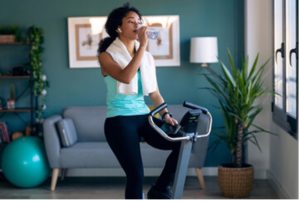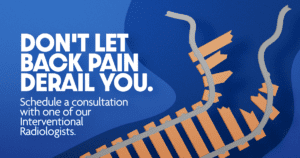Lower back pain is one of the most common pains experienced universally and can be caused by a variety of things, including injury, improper posture, arthritis, and obesity. However, many have been able to find relief from chronic back pain through exercise. For those looking for a form of physical activity that’s low impact and easy on the joints, cycling may be an excellent option to consider. In this blog, we’ll discuss how, if done properly, bicycling can help ease lower back pain and how to remain mindful of injury when cycling.
Benefits of Bicycling for Low Back Pain
Bicycling is the perfect activity to not only get you outside but also keep your body active. It comes with the added benefit of being low-impact, especially when compared to traditional exercises such as running or weightlifting. Seeing as bicycling puts less overall stress on your body, it can be especially helpful in reducing lower back pain. Bicycling is a form of exercise that doesn’t require much gear and can be done almost anywhere. Additionally, it’s a great option for reducing lower back pain, as it uses a healthy range of motion while providing the core strengthening benefits of an aerobic workout. Bicyclists often say they feel “loose” after a ride. When done correctly, bicycling helps to reduce lumbar muscle tension and improve flexibility—all important contributors to preventing or relieving lower back pain.

How to Avoid Further Injury When Bicycling
Cycling exercise is a great way to strengthen the lower back when done right. The primary goal should be to maintain good form throughout the ride to ensure proper technique and avoid further injury. To get started, make sure you have an outdoor or exercise bike that fits your body comfortably – handlebars at elbow level, seat position that allows for full leg extension, and back support. Be sure to listen your body. Avoid compromising your posture by vigorously pumping the pedals; instead, look for a steady and smooth rhythm. Keep your spine in a straight line from neck to pelvis, so your lumbar region remains supported while cycling. It’s also important to bring down the intensity – don’t pedal too hard or fast, as this can put strain on your muscles, tendons, ligaments, and discs in the lower back area, which can result in overuse injuries. Physical therapy from cycling can only be beneficial if done properly. With regular practice over time, you can prevent injury when cycling and relieve lower back pain.
Exercise can do wonders when it comes to combating lower back pain relief. Whether decreasing chronic pain, improving flexibility, strengthening muscles around the spine, or reducing stress – the benefits are plenty. By engaging in activities like cycling, you can improve not only your overall physical health but also your mental well-being. Be sure to consult a doctor prior to starting any exercise plan. They will be able to best evaluate how cycling can fit into your individual rehabilitation journey.

There’s nothing to gain from chronic low back pain. Prioritize yourself in 2023 and please visit our website https://www.radiologyofindiana.com/services/back-pain-treatment-choose-your-location/ to find a location to schedule a consultation with one of our Interventional Radiologists.
Resources:
https://www.webmd.com/back-pain/ss/slideshow-exercises#:~:text=Walking%2C%20swimming%2C%20and%20biking%20may,strokes%20that%20twist%20your%20body.
https://cyclingtips.com/2018/10/lower-back-pain-from-cycling-why-it-happens-and-how-to-prevent-it/


